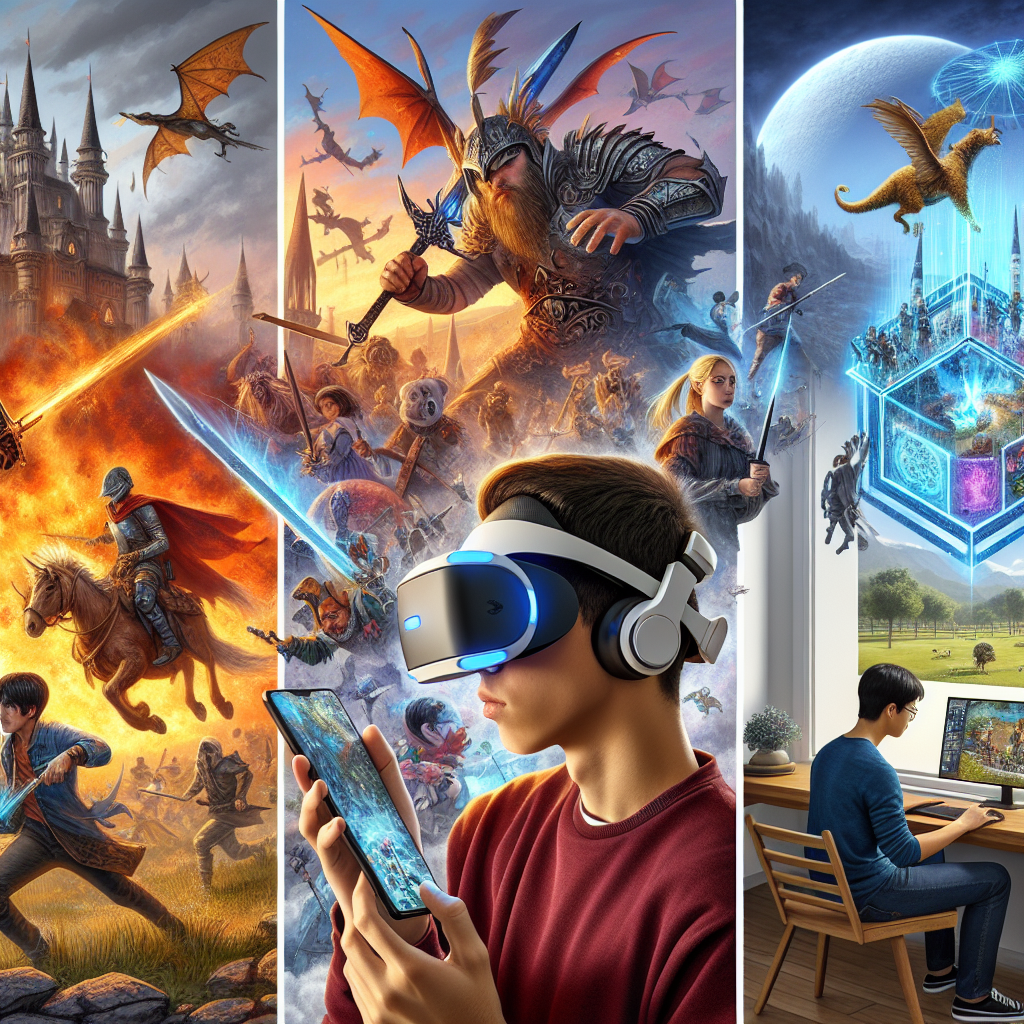Immersive Experiences: VR and AR in Web3 Gaming
Immersive Experiences: VR and AR in Web 3 Gaming
Virtual Reality (VR) and Augmented Reality (AR) technologies are revolutionizing the gaming industry by providing immersive and interactive experiences. As the web3 gaming ecosystem continues to evolve, these technologies are being integrated to enhance gameplay and create new possibilities. News outlets are actively covering the advancements and applications of VR and AR in web3 gaming, showcasing the potential for transformative experiences.
VR technology offers players the opportunity to fully immerse themselves in virtual worlds, blurring the lines between the real and digital realms. By wearing a VR headset, players are transported into a 360-degree virtual environment where they can interact with objects, characters, and other players in a more lifelike and engaging manner. This level of immersion opens up a new dimension of gameplay, where players can physically move, gesture, and explore their surroundings, creating a sense of presence and embodiment.
News reports often highlight the integration of VR technology in web3 gaming, showcasing the advancements and applications in various genres. VR-powered role-playing games (RPGs) allow players to step into the shoes of their in-game characters, experiencing quests, battles, and adventures in a first-person perspective. Virtual reality also enhances social gaming experiences, enabling players to meet and interact with others in shared virtual spaces, fostering a sense of community and connection.
Augmented Reality (AR) technology, on the other hand, overlays digital elements onto the real world, enriching players' surroundings with virtual objects and interactions. AR gaming experiences can be enjoyed through smartphones, tablets, or specialized AR glasses, allowing players to see and interact with virtual elements seamlessly blended into their physical environment. This technology opens up new possibilities for location-based gaming, where real-world landmarks and objects become integral parts of the gameplay.
News outlets cover the integration of AR technology in web3 gaming, highlighting innovative applications and the impact on player experiences. AR-powered games can transform parks, streets, and public spaces into virtual playgrounds, where players can engage in treasure hunts, competitive battles, and collaborative quests. AR also enables immersive storytelling experiences, where narratives unfold in the player's physical surroundings, blurring the boundaries between fiction and reality.
One notable aspect of VR and AR in web3 gaming is the potential for the integration of blockchain technology and decentralized assets. Non-fungible tokens (NFTs) can be utilized to represent unique virtual items, characters, or locations in VR and AR experiences. This tokenization allows players to truly own and trade virtual assets, bringing a new level of scarcity, value, and interoperability to the gaming ecosystem.
News reports often showcase successful implementations of blockchain technology in VR and AR gaming, highlighting the benefits of ownership, provenance, and decentralized marketplaces. Players can collect rare and valuable virtual assets, participate in player-driven economies, and engage in peer-to-peer trading of NFTs. This intersection of blockchain, VR, and AR creates a more immersive and player-centric gaming experience, where players have true ownership and control over their virtual possessions.
Challenges, however, accompany the integration of VR and AR in web3 gaming. Technical considerations such as hardware requirements, performance optimization, and user comfort are areas that require continuous innovation and refinement. Additionally, accessibility and affordability remain barriers for wider adoption, as VR and AR devices are still relatively expensive and not accessible to everyone.
News coverage sheds light on the ongoing advancements and efforts to overcome these challenges. Innovations in hardware, software, and user interfaces are improving the overall VR and AR experience, making them more accessible and comfortable for players. Collaboration between game developers, technology companies, and VR/AR enthusiasts drives progress and creates a vibrant ecosystem for web3 gaming.
In conclusion, the integration of VR and AR technologies in web3 gaming is reshaping the gaming landscape by providing immersive and interactive experiences. News reports highlight the advancements and applications of VR and AR in various gaming genres, showcasing the potential for transformative gameplay and player engagement. With continued innovation and collaboration, VR and AR have the power to redefine the way we play games, bringing us closer to virtual worlds and unlocking new dimensions of gaming experiences in the web3 era.
